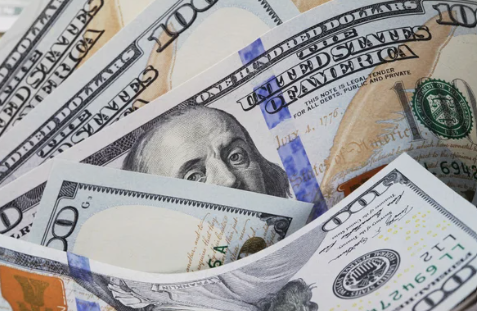
Emerging Markets | Europe | FX | Global | UK | US

Emerging Markets | Europe | FX | Global | UK | US
This article is only available to Macro Hive subscribers. Sign-up to receive world-class macro analysis with a daily curated newsletter, podcast, original content from award-winning researchers, cross market strategy, equity insights, trade ideas, crypto flow frameworks, academic paper summaries, explanation and analysis of market-moving events, community investor chat room, and more.
The dollar (BBDXY) had an eight-week winning streak before last week, up nearly 5% since mid-July. Is this the beginning of a new trend? Macro Hive’s Richard Jones recently argued the rise has momentum to last into Q4 as US growth is outperforming, the USD is a high yielder, and rising oil prices are dollar positive.

I sympathise with Richard’s arguments but am somewhat sceptical. In my base case, I expect the dollar to struggle for a clear direction this and most of next quarter. I find the two historic USD drivers – Fed rate expectations and risk sentiment – neither support nor oppose the currency. Therefore, I have argued idiosyncratic and relative-value (RV) trades are appealing, while carry should continue to perform.
Since 2005, US rate expectations and global equities have explained nearly a third of USD quarterly variation. That is meaningful explanatory power given regressions are run on returns. Higher US rates are associated with dollar appreciation, and stronger equity performance with dollar depreciation (Table 1) – all very intuitive based on carry and flight into/out of safety. For example, spot USD tends to appreciate by 1.7% when US rates rise by 1ppt and weaken by 2.5% when global equities gain around 10%.

I think the Fed has almost finished tightening monetary policy (the market is pricing 12bps of additional hikes). Yet there are risks of more (see below) – and changes in the dot plot released on Wednesday will trigger a market reaction. Inflation and wage growth are cooling as pandemic-era excess savings – in my view, the major culprit – are being depleted.
Also, while the next market drivers will likely be the timing and magnitude of monetary policy easing, I believe the Fed will avoid explicit guidance on this. Memories of the ‘temporary inflation’ narrative in summer 2021 are still too fresh. Instead, I expect communication to maintain optionality. That should keep markets on the fence and rate expectations relatively stable – albeit with some volatility.
Without rate expectations driving the broad dollar, I think risk (equities) become pivotal. Yet absent an exogenous shock, my base case is for range trading this and next quarter. This will leave the USD struggling for direction.
On one hand, global activity trackers such as the composite PMIs reflect a clear slowdown but also a broad-based manufacturing rebound – albeit from very low levels – consistent with muted global growth for now.
On the other hand, a material reacceleration of the global economy would need China at its epicentre. I think the last two years suggest Chinese authorities aim to (i) provide a backstop rather than an outright boost to the troubled property sector and (ii) improve quality rather than quantity of growth.
In short, China is unlikely to under- or over-shoot GDP growth expectations meaningfully; nor will global activity. This is important because equity returns have a tight historical correlation with world growth (Chart 2). Therefore, the absence of material equity gains/losses into yearend will likely leave the dollar minimally impacted.

I see three main risks to my narrative (barring exogenous shocks):
Spring sale - Prime Membership only £3 for 3 months! Get trade ideas and macro insights now
Your subscription has been successfully canceled.
Discount Applied - Your subscription has now updated with Coupon and from next payment Discount will be applied.